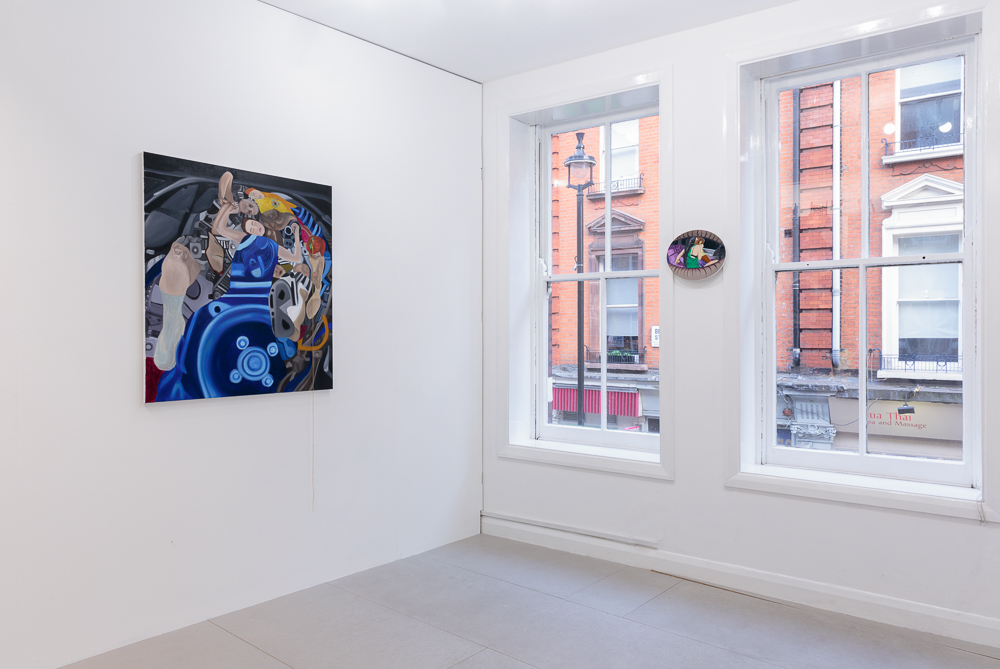
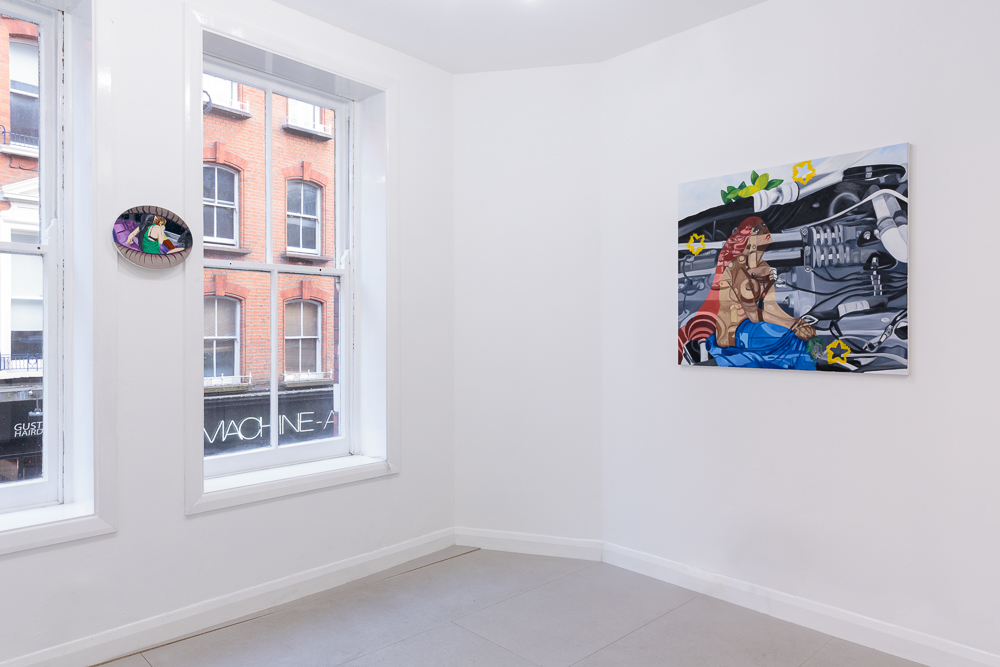
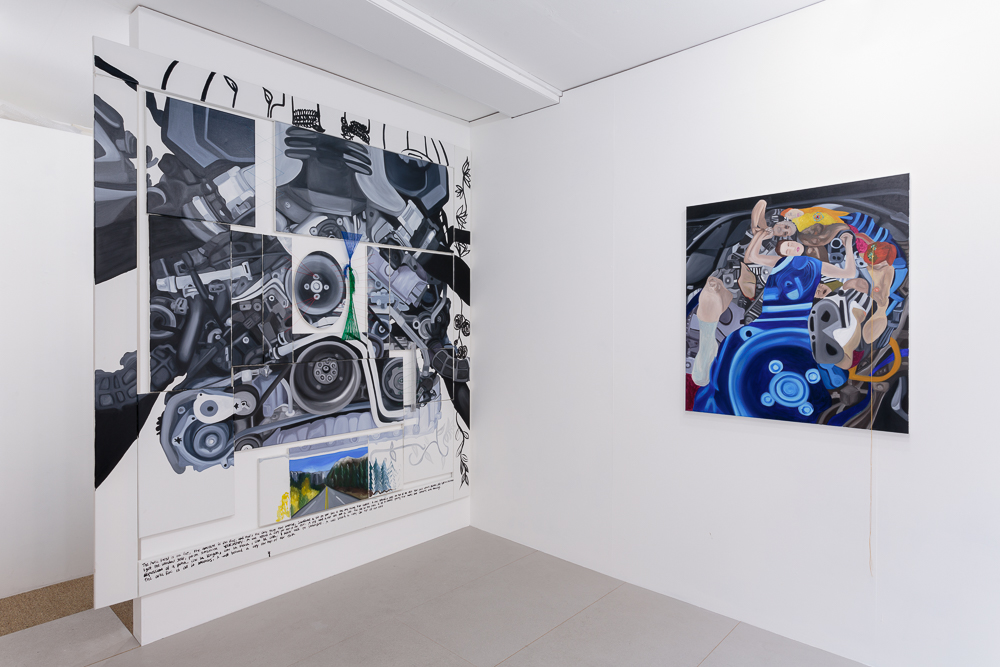



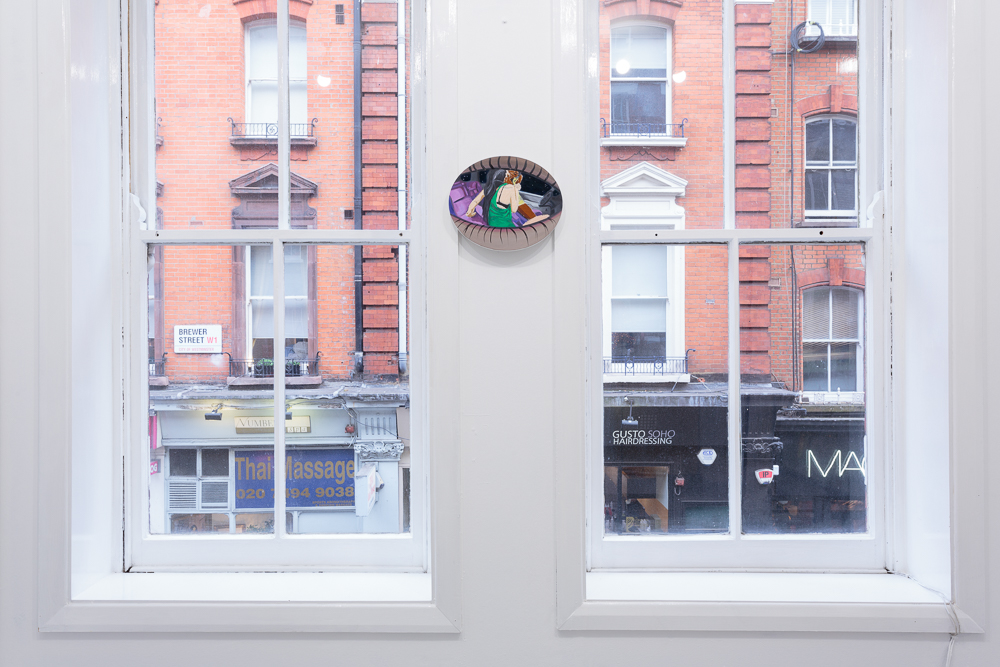


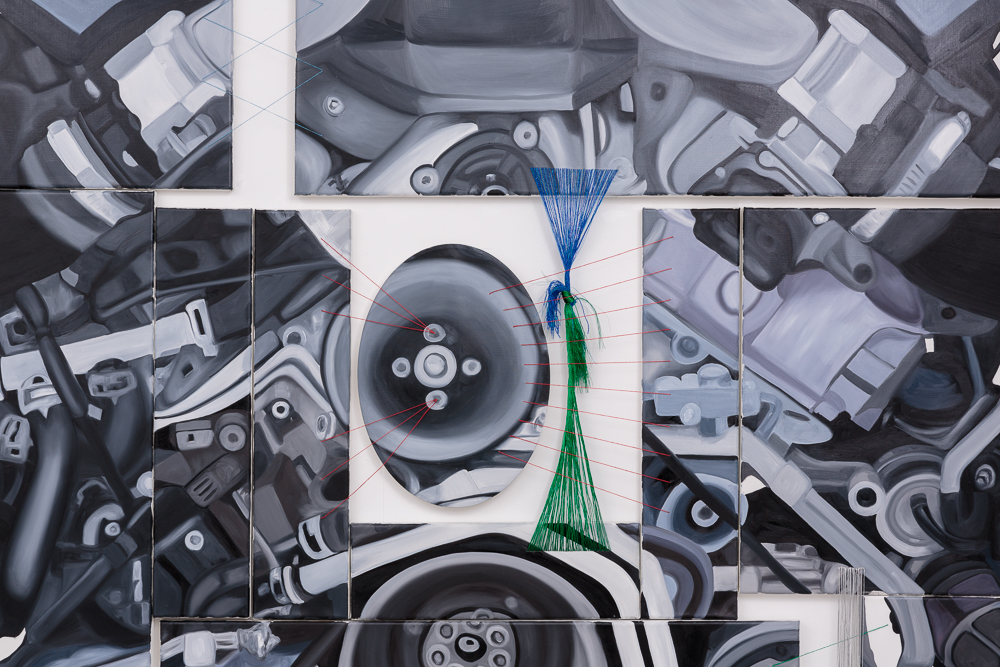
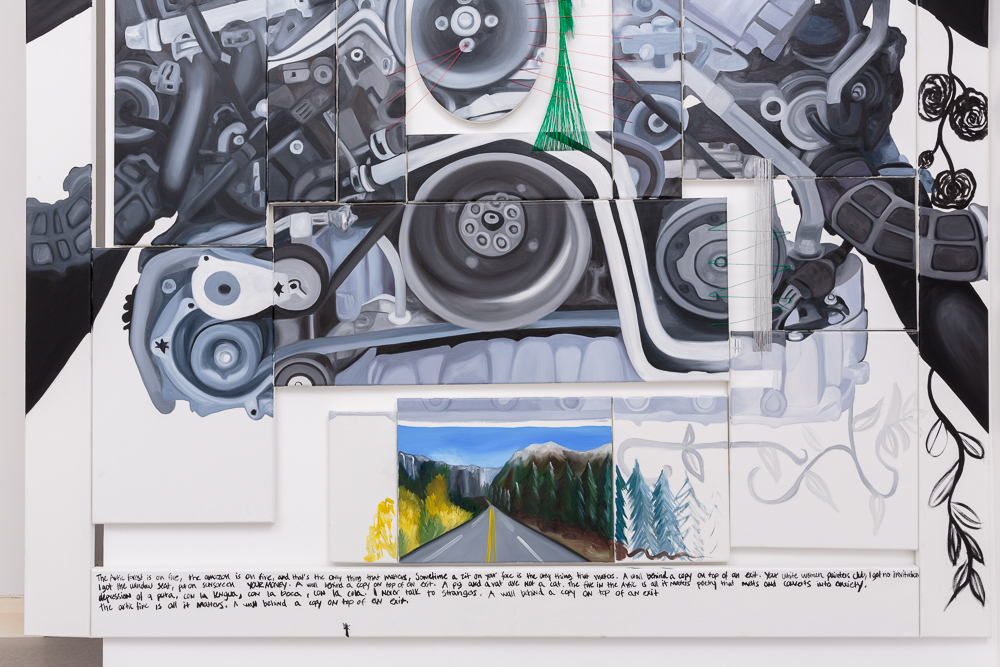
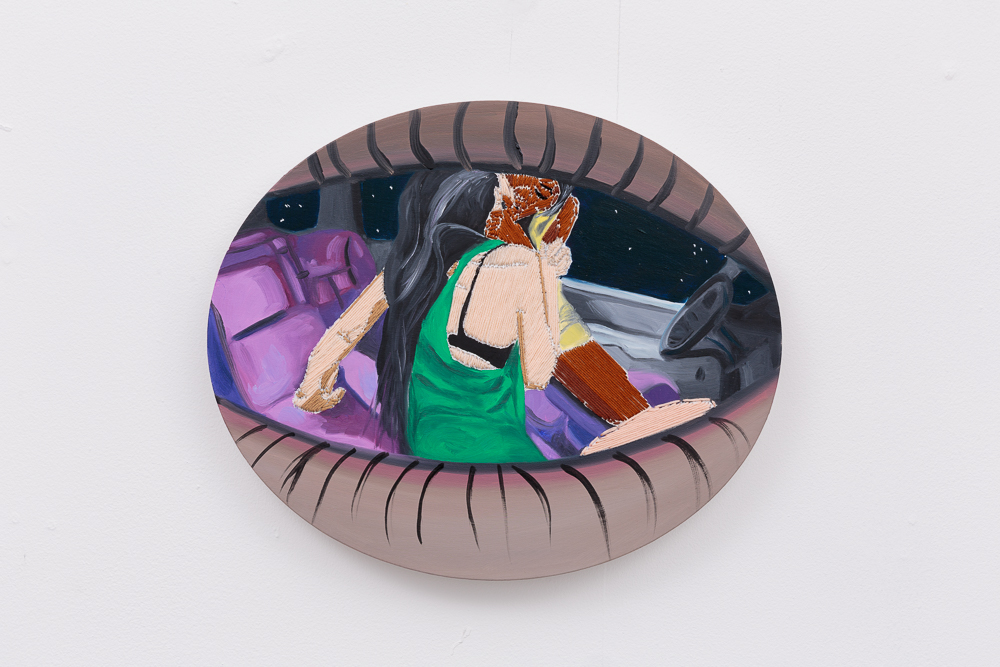

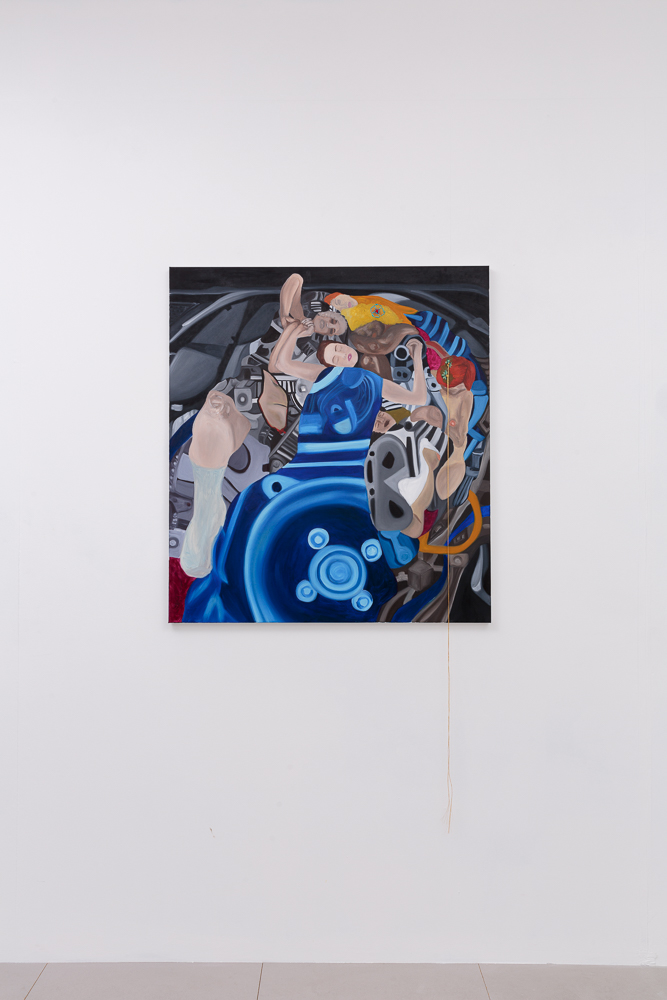
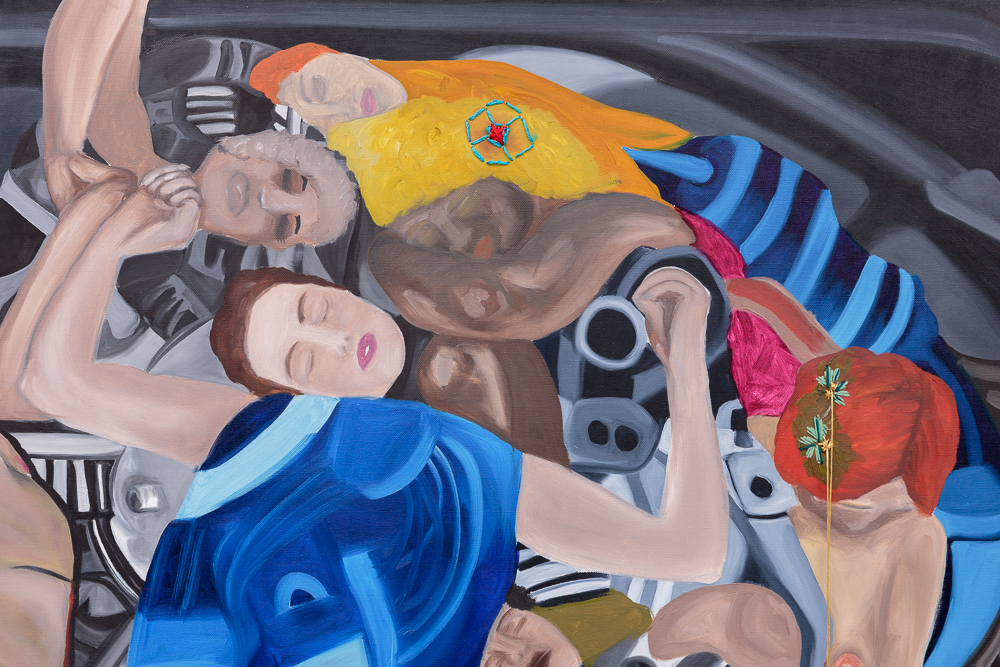

Frieda Toranzo Jaeger’s exhibition, Fantasies of Autonomy, builds on her practice of scrutinising the painting, probing its plane and its edges, and contaminating late capitalist imagery.
The idea of autonomy as an ideal which one must move towards in order to find liberation is imbued with a sense of speed, progress, a movement forward. This velocity—coupled to fantasies of autonomy—is often hijacked by a representation of speed and progress that is most typically consumerist, dependent economies of status and experience, and fuelled by corporate global industries.
The work of Toranzo Jaeger swiftly rearranges the symbolism of the product, the tempo (sometimes introducing total stillness within and amongst a moving vehicle) and orientation through which late capitalist images are presented, as well as the deep rooted desire through which we understand the very notion of autonomy.
The largest work in the show, spanning almost all one gallery wall, and seeping over its edge, could feel like a small nod to Mexican Muralism—exercising a form of artistic autonomy by truly occupying a wall, incorporating politically charged devotions and aspirations expressed through machinic imagery.
As with some of the contradictions of social realist murals, A wall behind a copy on top of an exit promises futurity, however innovation might still be dependent on enabling a capitalist logic associated with momentum. The small landscape at the bottom functions as another representation of speed, as well as a romantic motif for freedom. Yet here Toranzo Jaeger uses this landscape—a horizon—as a window to additionally consider the making of space to imagine a future; and beyond that, to think about creating it.
The close-up, almost bird’s eye view of an engine, so interior as the gut or a heart, in proximity with the window to an outside landscape, hemmed in by a painting-as-frame, and with the negative space of the walls in-between stitched together canvases, pushing in and out of relief, draws on much of the artist’s interest in space. This interest becomes a study, not limited to the pictorial plane, but equally invested in the relationship between inner self and outer world. With the patches of wall in this central work, we can see beyond the painting, whilst what is beyond the painting is also in fact, part of it.
Autonomy, interiority and their interconnection with the outside pervade also in virgin machines and waiting for fully Automated Luxury communism, the latter perhaps the most doubtful of the actual possibility to see or reach a liberatory state. The single female figure is a reference to Pierre Puvis de Chavannes work, La Toilette (1883), and acts as a continued depiction of women doing makeup or brushing hair as a part of a construction of the feminine self. This is the female body as perfectly mechanised and honed object of late capitalism, the material proof or physical location of affective labour.
In contrast, the figures in virgin machines are ecstatically confident in their domination of liberation, they own it through pleasure and lovingly become engine. In this work and throughout the exhibition, the use of the engine provides a framework for queering. Consistently the artist sidetracks heteronormalised expectations that the machine be bound solely to production (or reproduction) and so-called ‘functional’ processes. Instead we see sites of fantasy and pleasure.
Referencing Klimt’s The Virgins, Toranzo Jaeger dismisses the Western art historical tradition of women-as-decor, and instead places the figures as within an active operating system. The bodies’ mechanisation in this work provides splendid release from, rather than reassertion of, a feminised objecthood.
The differing optimism in waiting for fully Automated Luxury communism and virgin machines acutely demonstrates the oscillation of the artist within her uncovering of autonomy—as fraught as it is to want, it is as fraught to represent, a bravery has been undergone.
Works
Gallery (from left to right):
A wall behind a copy on top of an exit, 2019
Oil on canvas and embroidery
231 × 216 cm (91 × 85 inches)
virgin machines, 2019
Oil on canvas and embroidery
100 × 90 cm (39 ⅜ × 35 ⅜ inches)
The window seat, 2019
Oil on canvas and embroidery
25 × 30 cm (9 ⅞ × 11 ¾ inches)
waiting for fully Automated Luxury communism, 2019
Oil on canvas and embroidery
90 × 100 cm (35 ⅜ × 39 ⅜ inches)
Office:
Life fears, 2019
Oil on Canvas
30 × 30 cm (11 ¾ × 11 ¾ inches)